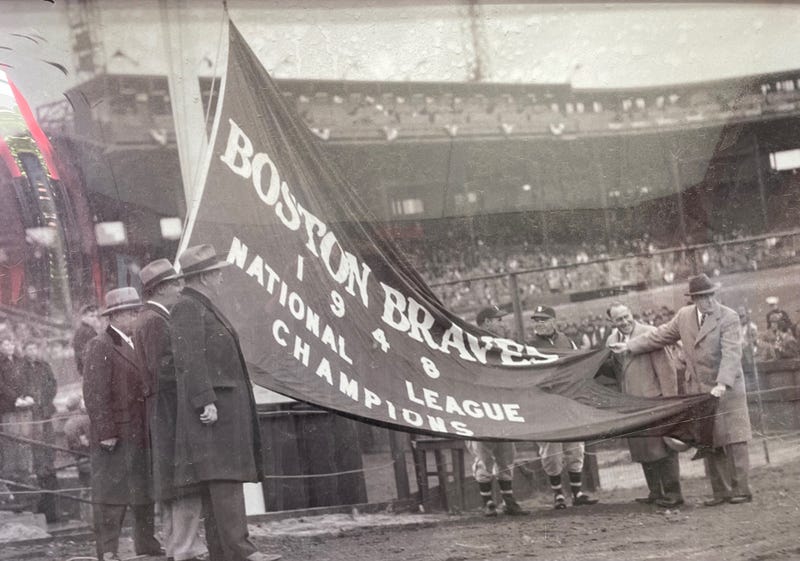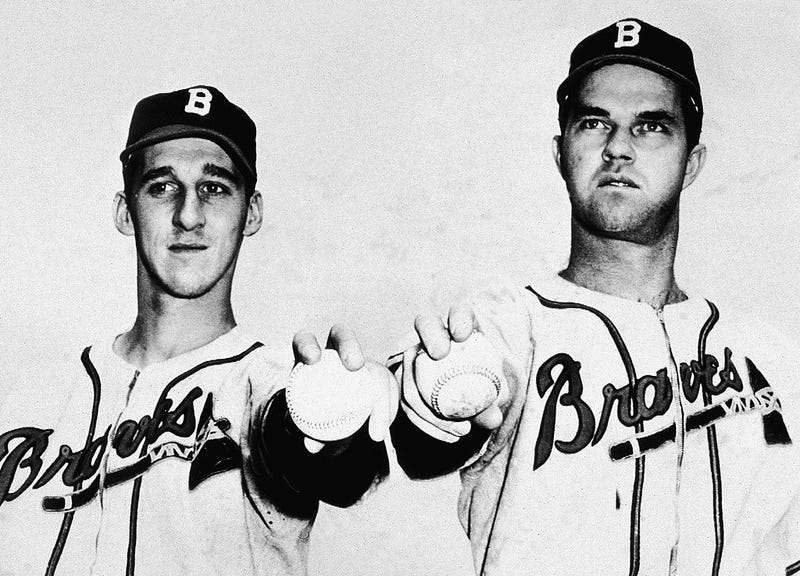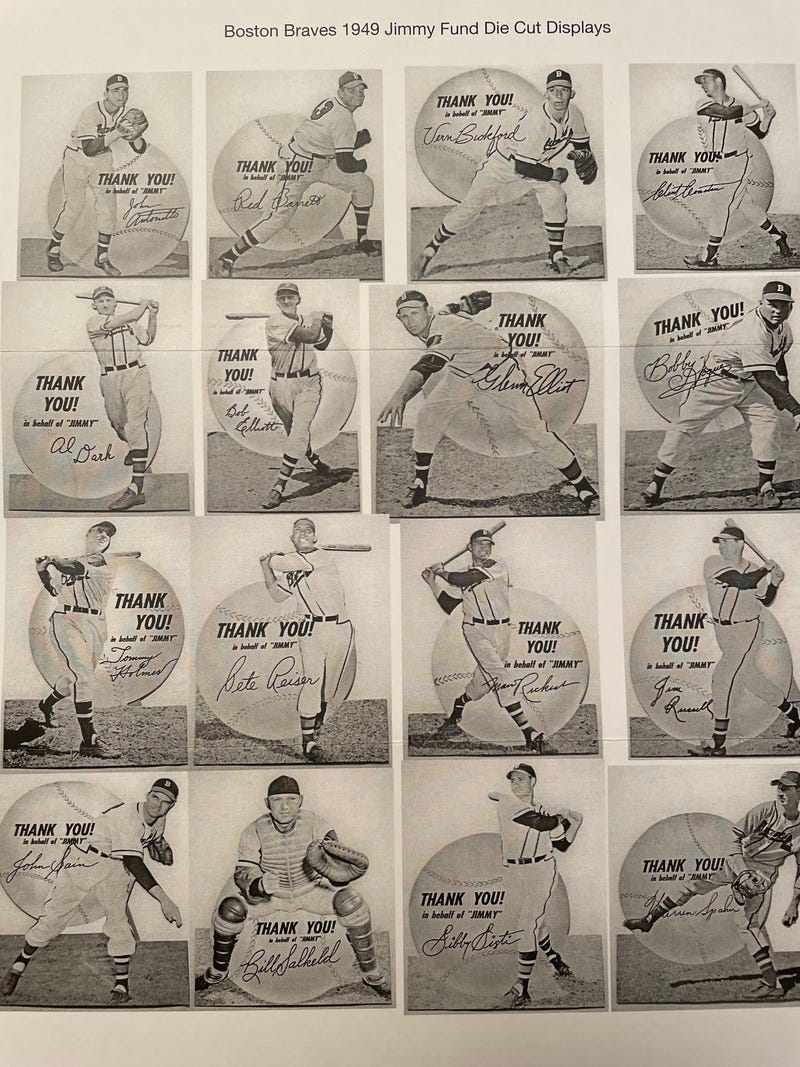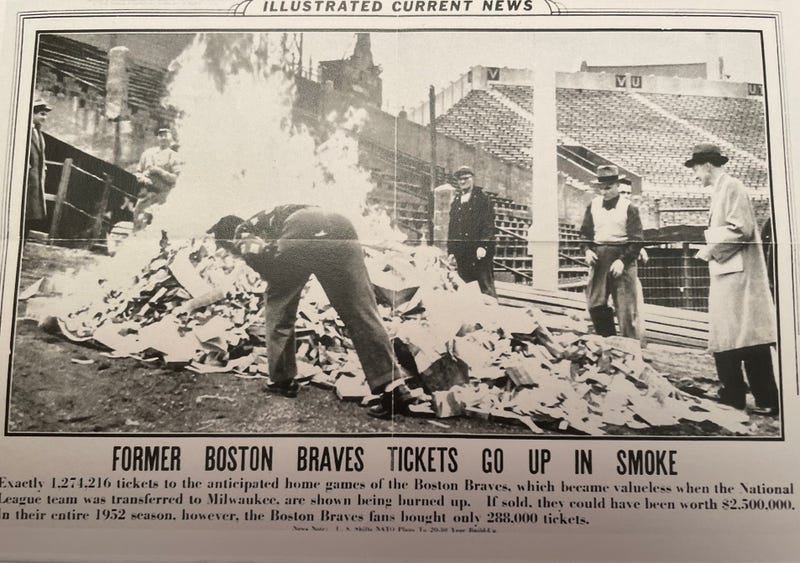
Once upon a time, a Red Sox-Braves World Series would have meant everything to Boston. Today, the overwhelming majority of baseball fans in Boston are disappointed only in the fact that the Red Sox are not there, having fallen to the Houston Astros in the American League Championship Series.
Which National League team the Red Sox would have faced had they prevailed seemingly matters little. If anything, a return of Mookie Betts with the Los Angeles Dodgers probably would have been a juicier story than a return of the Braves.
Everyone remembers Betts, who won a World Series and an MVP during his six years here before he was traded away in Feb. 2020.
The number of people who still remember the Boston Braves, who played here for 82 years before moving to Milwaukee in March 1953, is much smaller.
For those who do remember, though, there is a feeling of disappointment as they reflect on a missed opportunity to finally get that Red Sox-Braves World Series they’ve been longing for. The Braves did their part, disposing of the Dodgers in six games. The Red Sox came up two wins short, though.
“I feel sad, especially for those members in our group that actually go back to the days of the Boston Braves, who went to Braves Field, were loyal to the team,” said Bob Brady, the president of the Boston Braves Historical Association.
The BBHA’s membership hovers around 300 people these days. Not all of them were alive when the Braves actually played in Boston, but some were. Some were members of the team’s “Knothole Gang” -- a promotion that allowed kids to attend games for just 10 cents, and a symbol of the team’s more working-class roots that stood in contrast to the Red Sox’ wealthier base. In fact, some would have been in attendance the only other time the Braves and Red Sox came this close to meeting in the World Series.
In 1948, the Braves had won the NL pennant. The Red Sox finished tied with the Cleveland Indians for first in the AL, forcing a one-game playoff for a World Series berth. A Red Sox win would have meant the first-ever championship “streetcar series” -- a much more important edition of the “city series” exhibition games the Braves and Red Sox had played at the end of spring training for many years.
Instead, the Red Sox lost to the Indians, 8-3, at Fenway Park. Cleveland headed down Commonwealth Avenue for Game 1 at Braves Field a couple days later and went on to beat the Braves in six games.
“We actually have a few, a very few, members who actually attended the 1948 World Series,” Brady said. “Especially for the old-timers, there’s always been this feeling of an opportunity missed. … That was the first and only time that event had the potential of occurring.”


While the Red Sox facing the Atlanta Braves 68 years after the franchise left Boston would have still meant something to those Braves fans -- and there are plenty more still around who are not members of the BBHA -- it obviously would not mean as much to younger fans and the city as a whole. But it certainly would have at least revived the memory of the Boston Braves for a week, and Brady laments that missed opportunity as well.
“It would have provided a level of interest going back in the Braves’ history, and the Boston version of it,” Brady said. “We would have had more of an opportunity to expose the baseball world to the days of the Boston Braves. … That interest is pretty much dissipating, so we’ve lost that opportunity with our primary objective, which is preserving the memory and the history of the Boston Braves and exposing others to it.”
That interest is dissipating not just in the moment because Red Sox-Braves isn’t happening, but also in the bigger picture. That’s what happens as more time passes and the number of people with direct connections to the Boston Braves shrinks every year. Del Crandall, the last surviving Boston Braves player, died earlier this year.
A critical part of the team’s history is very much still alive, though, as significant portions of Braves Field remain standing on Boston University’s campus. While most of the stadium was demolished in the years following the Braves’ move to Milwaukee, the right-field pavilion still stands as the Nickerson Field grandstand today. The concourse under it looks much the same as it would have for a Braves game.
The main entrance and the building that housed the Braves’ management and ticket offices is still standing on Harry Agganis Way as well, now the home to the BU Police Department. The BU Children’s Center was also located there until it moved to a bigger home last year.
“There would have been TV crews camped out on Commonwealth Avenue, visiting Nickerson Field and looking at the old clubhouse and probably doing some stand-up stories from the right-field stands, which are the last part of the grandstand existing from Braves Field,” said Richard Johnson, curator for The Sports Museum and member of the BBHA. “There certainly would have been a lot of attention paid to the historical bent of the story. It really would have been the overlay of the whole thing. Unfortunately, not this year.”
Braves Field also holds a place in Red Sox history. Despite Fenway Park being only a few years old itself, the Red Sox opted to play their World Series home games at the brand-new Braves Field in both 1915 and 1916 because it had a higher capacity, meaning higher gate receipts. That came after the 1914 “Miracle Braves” won the franchise’s only World Series in Boston while playing at Fenway because Braves Field was under construction.
Babe Ruth’s earliest World Series pitching heroics -- a 14-inning, one-run masterpiece against Brooklyn in 1916 -- came at Braves Field, not Fenway. His final season as a pro also came there, when he played 28 games for the Braves in 1935 at the age of 40.
The Red Sox and Braves’ histories are intertwined far beyond those fun facts. Arguably the most important part of the Boston Braves’ legacy today is The Jimmy Fund, founded in 1948 to benefit Dana-Farber Cancer Institute.
While The Jimmy Fund has long been partners with the Red Sox at this point, its first partnership with a pro team was with the Braves. The Jimmy Fund’s first national radio broadcast in 1948 featured a young patient named “Jimmy” with players from his favorite team, the Braves. Donations poured in to buy a TV for Jimmy (later revealed to be Einar Gustafson) so he could watch Braves games.
The Braves and Dana-Farber continued to work together until the team’s move to Milwaukee. When that decision was made, Braves owner Lou Perini talked to Red Sox owner Tom Yawkey about The Jimmy Fund, and Yawkey agreed to have the Red Sox take over as partners.
“I would say the greatest legacy of both franchises is their support of The Jimmy Fund,” Johnson said. “The Braves started it, and the Red Sox, to their eternal credit, picked up the mantle from the Braves in 1953 and have continued to support it. When you’re talking about an institution that saves lives, that transcends baseball and transcends sports. And it’s the one institution that both teams share.”

Another important moment in Braves and Boston history came in April 1950, when the Braves became the first Boston pro team to break the color barrier. Outfielder Sam Jethroe, who would be named NL Rookie of the Year that season, made his debut nearly seven months before Chuck Cooper did so with the Celtics and more than nine years before Yawkey’s Red Sox finally integrated with Pumpsie Green in 1959.
There’s also the story of the Braves as inspiration for Patriots owner Robert Kraft. Kraft, who was a Boston Braves fan as a kid and was at one point a member of the BBHA, has said in the past that part of the reason he was inspired to buy the Patriots and make sure they stayed in the area was that he didn’t want Pats fans to experience the pain he felt when the Braves left town.
By the time the Braves made that move in 1953, there had been plenty of rumors about a possible move. The timing -- in the middle of spring training -- caught everyone by surprise, though. Players had already made housing plans in Boston for the season, star pitcher and future Hall of Famer Warren Spahn was about to open a restaurant across from Braves Field, and Braves Field was even scheduled to host the 1953 All-Star Game, which would end up being moved to Cincinnati.
But the team’s play had declined after the magical 1948 World Series run, and so too had attendance. A then-franchise-record 1.5 million people attended Braves home games in 1948. Just four years later, with the team dropping to seventh-place in the eight-team NL in 1952, attendance had plummeted to 281,000. The Braves would top 1.5 million in each of their first seven years in Milwaukee, so it would be hard to argue Perini made a mistake.

Whether the Braves could have survived in Boston is one of local sports history’s great what-ifs. Future Hall of Famer Eddie Mathews was a rookie during the Braves’ final year in Boston. Future home run king Hank Aaron was in the farm system and would make his debut in Milwaukee in 1954. Despite already being 31 years old, some of Spahn’s best seasons were still to come. They would form the backbone of a Milwaukee Braves team that quickly turned things around, beating the mighty Yankees in the World Series in 1957 and taking them to seven games again the next season.
Johnson believes that Boston would not have been able to support two MLB teams forever, but that the Braves being the one that moved was not always a given. While the Milwaukee Braves went on to glory days in the late '50s, the Red Sox began to nosedive around the same time as Ted Williams’ career wound down and then ended. They had a losing record eight straight years from 1959 to 1966 before the 1967 “Impossible Dream” brought the team back to prominence.
If the Braves had won in 1948 and maintained that success… who knows?
“I think it would and could have propelled the Braves into building a new ballpark and remaining in Boston or New England [if they had won it all in 1948],” Johnson said. “Gosh knows how many more years they would have lasted here. With an owner who was a major contractor in Lou Perini, he really wanted to stay.
“If they had beaten the Red Sox that year, I think there’s a good chance that they may well have. And if that had occurred, of course, can you imagine Henry Aaron and the 1957 team beating the Yankees wearing Boston uniforms? That would have changed things completely. One can speculate, would the Red Sox have been the team to move? Possibly. … A victory in that World Series may well have kept them here.”
On the admittedly narrow path in which things play out differently, perhaps it would be the Red Sox who were now little remembered in Boston today, their fans longing to see their old team return for a World Series, and Fenway Park that had only a few pieces still standing.
